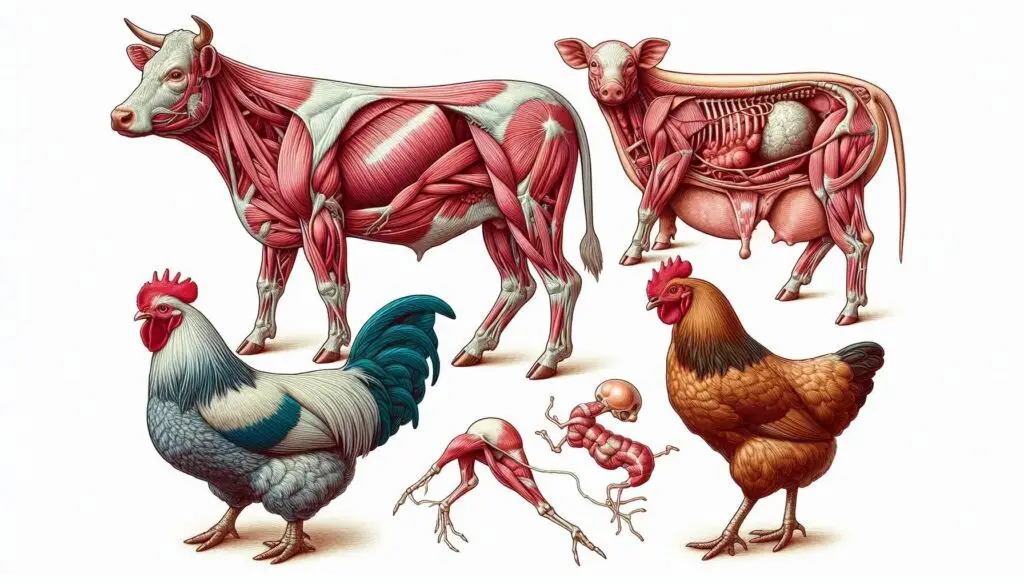In Vivo Methods in Livestock Research

Introduction
In vivo methods play a crucial role in livestock research. These techniques involve studying living organisms to observe biological processes and responses to various treatments. This article will delve into the importance of in vivo methods, their applications, advantages, challenges, and future directions.
What Are In Vivo Methods?
In vivo is a Latin term meaning “within the living.” This approach contrasts with in vitro studies, which occur outside a living organism, such as in petri dishes or test tubes. In vivo studies are essential for understanding how animals metabolize nutrients and respond to dietary changes.
Types of In Vivo Studies
- Animal Trials: These involve testing hypotheses on live animals to observe physiological responses.
- Clinical Trials: These studies focus on human participants but often draw from animal research for initial data.
- Field Studies: Conducted in natural settings, these studies assess the effects of various factors on livestock health and productivity.
Importance of In Vivo Methods
In vivo methods provide reliable data about animal responses to dietary treatments. They help researchers understand the complex interactions within living organisms that cannot be replicated in vitro.
Key Benefits
- Realistic Responses: These methods capture how animals react to diets under normal living conditions.
- Comprehensive Data: Researchers can gather extensive data on various biological processes.
- Nutritional Insights: In vivo studies help optimize feed formulations for better livestock health.
Applications in Livestock Research
In vivo methods are widely used in various areas of livestock research:
Nutritional Studies
Researchers evaluate new feedstuffs and additives to determine their impact on digestibility and overall animal health. For instance, studies may focus on how different grains affect rumen fermentation.
Health Assessments
In vivo techniques allow researchers to monitor disease progression and treatment efficacy in livestock. This helps improve animal welfare by identifying effective interventions.
Environmental Impact Studies
These studies examine how dietary changes can reduce methane emissions from ruminants, contributing to sustainability efforts.
Challenges of In Vivo Research
While valuable, in vivo methods come with challenges:
Cost and Resource Intensive
In vivo studies require significant funding for animal care, housing, and monitoring. This can limit the number of experiments conducted.
Ethical Considerations
There is growing concern over animal welfare, leading to calls for reduced use of animals in research. This has spurred interest in alternative methods like in vitro techniques.
Limited Scope
Due to logistical constraints, researchers often test fewer dietary treatments compared to what can be assessed through in vitro studies.
Alternatives to In Vivo Methods
Researchers are exploring alternatives to reduce reliance on live animal studies:
- In Vitro Techniques: These laboratory-based methods simulate digestion processes but cannot replicate all metabolic activities.
- Computer Modeling: Advanced simulations can predict how animals might respond to different diets without using live subjects.
The Future of In Vivo Research
As technology advances, the future of in vivo research looks promising. Innovations may include:
- Enhanced Monitoring Tools: Wearable devices could provide real-time data on animal health and behavior.
- Genetic Studies: Understanding genetic variations can lead to tailored nutrition strategies for different breeds.
- Sustainable Practices: Emphasizing animal welfare while optimizing production will be key for future research initiatives.
Conclusion
In vivo methods remain a cornerstone of livestock research. They offer invaluable insights into animal nutrition and health that are critical for improving productivity and sustainability. While challenges exist, ongoing advancements promise to enhance the effectiveness and ethical considerations of these methodologies.
For more pearls of Vets Wisdom:
https://wiseias.com/partitioning-of-food-energy-within-animals/






Responses